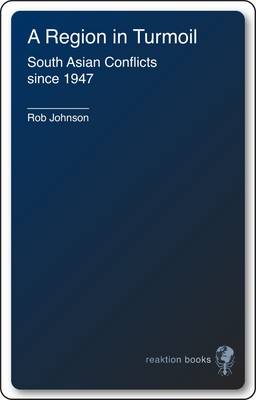Contemporary Worlds
2 total works
Since 2001 there has been considerable interest in the individual conflicts that have engulfed the states of South Asia, from the long insurgency of Myanmar, through the struggle of the Tamil Tigers in Sri Lanka, the Maoist insurgency in Nepal, the unrest in the Punjab and Assam, the Bangladeshi war of independence, the gruelling conflict in Kashmir, to the intractable conflicts of Afghanistan and the current ?War on Terror?. In A Region in Turmoil: South Asian Conflicts since 1947, Rob Johnson explains and evaluates the historic and political roots of conflicts in South Asia in a systematic and thematic way. To date, few accounts have attempted to draw together the conflicts of the South Asian region as a whole, and they are rarely examined in the regional or global context. The failure to take a regional perspective in the past has meant that important connections have not always been understood in the West, and the view from South Asia has perhaps not been fully explored. The author addresses this gap, illustrating the causes, developments, context and conclusions (or absence of them) of conflicts in the South Asian region.
The subject is vitally important, not least because the two leading states, India and Pakistan, are both nuclear powers who have resorted to war with each other on a number of occasions since independence. In addition, the insurgencies of the last fifty years continue to destabilize the states of the region, and now the rest of the world. The global context of these campaigns are analyzed from the end of empire, through the Cold War, to the global effort against terrorism today. Highly topical, this book will be of interest not only to students and scholars, but to a wide general audience as well.
The subject is vitally important, not least because the two leading states, India and Pakistan, are both nuclear powers who have resorted to war with each other on a number of occasions since independence. In addition, the insurgencies of the last fifty years continue to destabilize the states of the region, and now the rest of the world. The global context of these campaigns are analyzed from the end of empire, through the Cold War, to the global effort against terrorism today. Highly topical, this book will be of interest not only to students and scholars, but to a wide general audience as well.

